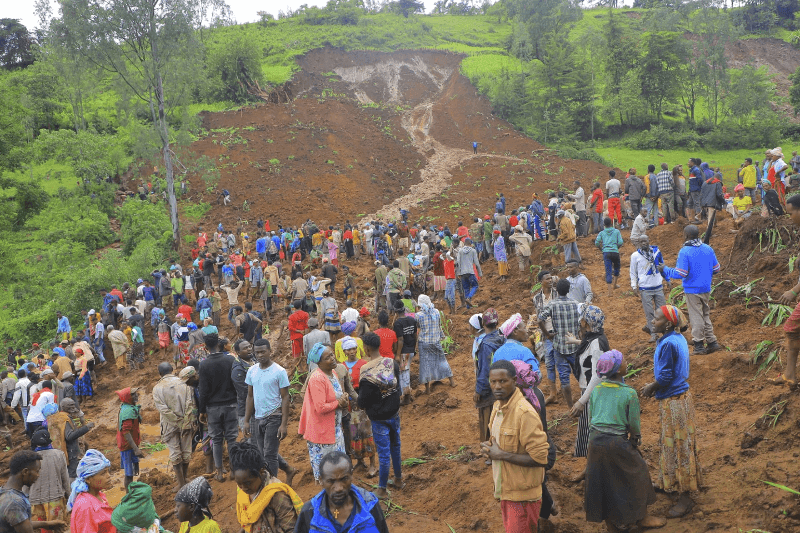In a remote area of southern Ethiopia suffering significant rains, at least 157 people have been killed in mudslides. Local authorities said that among the deceased were numerous people trying to save survivors of a previous mudslide.
The Kencho Shacha Gozdi area suffered the mudslides. Local administrator Dagmawan Ayele said among those who died were little children and pregnant women.
Head of the Gofa Zone communications office Kassahun Abayneh said that the dead toll rose sharply from 55 late Monday to 157 as search activities carried on Tuesday. The administrative area where these sad occurrences took place called Gofa Zone.
On Monday morning, most of the dead were buried in a mudslide while rescue agents searched the mountainous terrain for survivors of an earlier mudslide that had occurred the day before.
Ayele said, at least five persons have been pulled alive from the muck.
Another official from Gofa, Markos Melese, said that many people stayed missing, especially among those trying to save others when the second mudslide struck.
Melese, the director of the Gofa Zone disaster response organization, said, “We are still searching for the missing,” “There are children who are hugging corpses, having lost their entire family, including mother, father, brother, and sister, due of the accident.”
Currently in Ethiopia’s rainy season, the area started in July and should see activity until mid-September. The great and consistent rainfall during this time causes landslides to be common.
Keep Reading
Fighting difficult circumstances to locate any last survivors and recover the bodies of those who have sadly lost their lives, local authorities and disaster response teams keep searching and rescuing.
Coping with the terrible death toll and the destruction the mudslides inflict, the community is in great grief. The continuous efforts to help the impacted households and communities draw attention to the necessity of more disaster readiness and response strategies in places likely to experience similar natural disasters.

